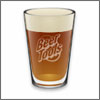flyangler18
Well-Known Member
Picked up a vial of Dusseldorf Alt yeast (WLP036) a few weeks ago, and I've been reading Horst D. Dornbusch's most excellent book on Altbier to give myself the requisite knowledge to brew this style. Here's a recipe that I have in process as an exercise in old German styles - the usual C/C wanted.
My biggest question is the inclusion of 60L in this recipe, because I'm not certain that it's a wise addition in terms of style and intended profile. I'm hoping for a firmly bitter, rich and malty ale that is worthy of the name.
I present to you:
[size=+2]Wildschwein Alt[/size]
[size=+1]7-C Düsseldorf Altbier[/size]
Author: Jason Konopinski
Date: 3/27/09

Size: 5.5 gal
Efficiency: 80%
Attenuation: 72%
Calories: 173.1 kcal per 12.0 fl oz
Original Gravity: 1.052 (1.046 - 1.054)
|===================#============|
Terminal Gravity: 1.015 (1.010 - 1.015)
|======================#=========|
Color: 14.77 (11.0 - 17.0)
|==================#=============|
Alcohol: 4.89% (4.5% - 5.2%)
|================#===============|
Bitterness: 47.9 (35.0 - 50.0)
|=====================#==========|
[size=+1]Ingredients:[/size]
5 lb Pilsner Malt
4.5 lb German Dark Munich
8 oz Crystal 60
3.0 oz Pale Chocolate
1 oz Galena (13.0%) - added during boil, boiled 60 min
.5 oz Tettnanger (4.5%) - added during boil, boiled 15 min
1.0 ea White Labs WLP036 Dusseldorf Alt
[size=+1]Schedule:[/size]
00:03:00 Dough-In - Liquor: 3.0 gal; Strike: 161.87 °F; Target: 149 °F
01:33:00 Saccharification Rest - Rest: 90 min; Final: 149.0 °F
02:03:00 Lautering - First Runnings: 0.0 gal sparge @ 145 °F, 10.0 min; Sparge #1: 2.94 gal sparge @ 180 °F, 10.0 min; Sparge #2: 2.94 gal sparge @ 180 °F, 10.0 min; Total Runoff: 7.87 gal
[size=-1]Results generated by BeerTools Pro 1.5.2[/size]
My biggest question is the inclusion of 60L in this recipe, because I'm not certain that it's a wise addition in terms of style and intended profile. I'm hoping for a firmly bitter, rich and malty ale that is worthy of the name.
I present to you:
[size=+2]Wildschwein Alt[/size]
[size=+1]7-C Düsseldorf Altbier[/size]
Author: Jason Konopinski
Date: 3/27/09

Size: 5.5 gal
Efficiency: 80%
Attenuation: 72%
Calories: 173.1 kcal per 12.0 fl oz
Original Gravity: 1.052 (1.046 - 1.054)
|===================#============|
Terminal Gravity: 1.015 (1.010 - 1.015)
|======================#=========|
Color: 14.77 (11.0 - 17.0)
|==================#=============|
Alcohol: 4.89% (4.5% - 5.2%)
|================#===============|
Bitterness: 47.9 (35.0 - 50.0)
|=====================#==========|
[size=+1]Ingredients:[/size]
5 lb Pilsner Malt
4.5 lb German Dark Munich
8 oz Crystal 60
3.0 oz Pale Chocolate
1 oz Galena (13.0%) - added during boil, boiled 60 min
.5 oz Tettnanger (4.5%) - added during boil, boiled 15 min
1.0 ea White Labs WLP036 Dusseldorf Alt
[size=+1]Schedule:[/size]
00:03:00 Dough-In - Liquor: 3.0 gal; Strike: 161.87 °F; Target: 149 °F
01:33:00 Saccharification Rest - Rest: 90 min; Final: 149.0 °F
02:03:00 Lautering - First Runnings: 0.0 gal sparge @ 145 °F, 10.0 min; Sparge #1: 2.94 gal sparge @ 180 °F, 10.0 min; Sparge #2: 2.94 gal sparge @ 180 °F, 10.0 min; Total Runoff: 7.87 gal
[size=-1]Results generated by BeerTools Pro 1.5.2[/size]




